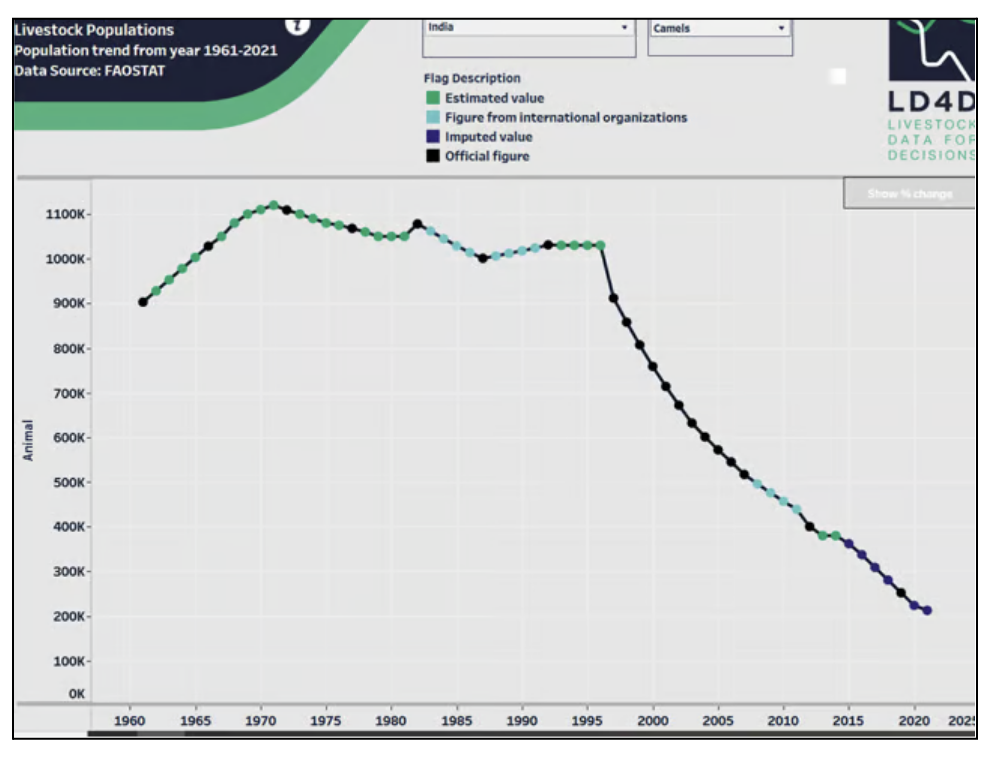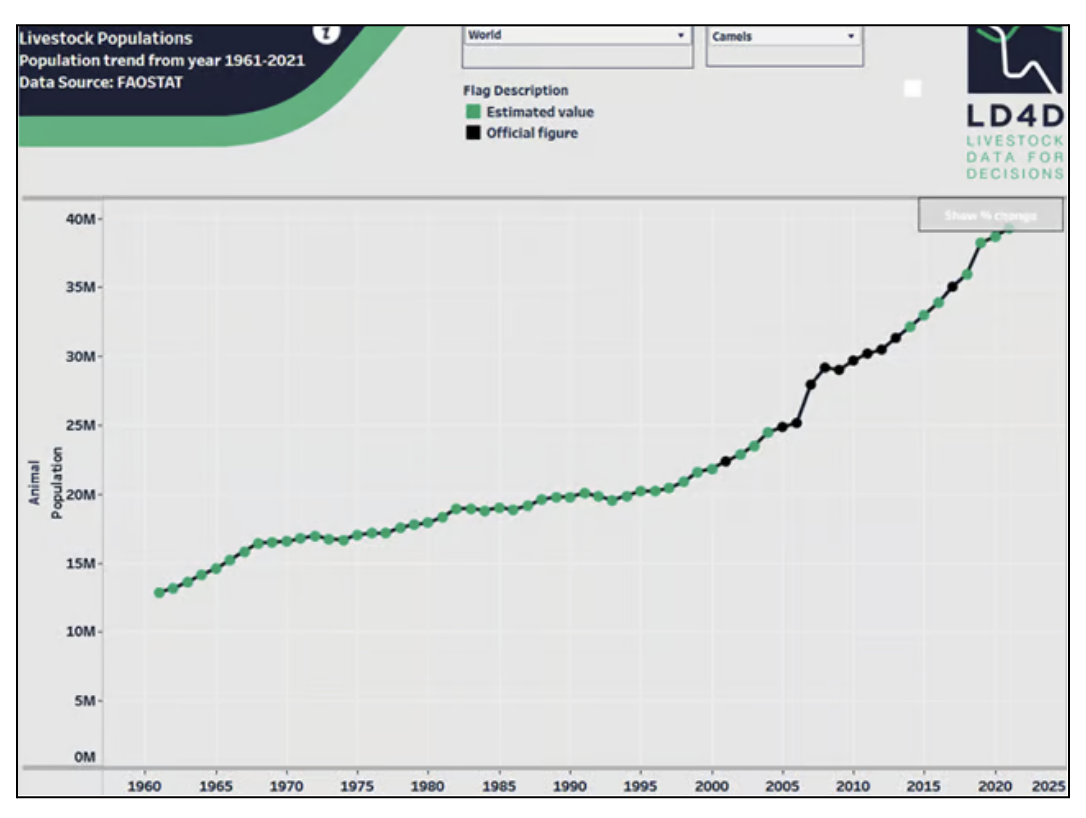News Excerpt:
Reports from Rajasthan suggested that there has been a whopping 40 per cent decline in the state’s camel population in the last two decades.
More about the News:
- The reports also stated that camel breeders are no longer interested in rearing the hardy animals known popularly as ‘Ships of the desert’.
- An article in a popular daily also imagined a scenario in the future where there would be no camels left in Rajasthan, where the species is the state animal.
- Scientists have suggested that the decline of the camel in India is concerning and highly ironical, as 2024 has been declared ‘Year of the Camelids’ by the United Nations Food and Agriculture Organization (FAO).
- The decline of the camel in India is on the lines of similar declines of other draught animals such as the donkey.
Trend in Population of Camels:
- Trend in India:

- Trend in World: In fact, it is just India. Everywhere else in the world, be it Pakistan, the Middle East and Africa, camel populations are thriving and flourishing.

Causes of Decline in Population:
- The law in India now prohibits the export of camels across state borders and out of the country. This has totally diminished the value of camels.
- Grazing areas for these animals have vanished.
- There is a lack of value chains for camel products.
- At the beginning of the 21st century, nomadic pastoralist cultures throughout the world were under siege, regarded as backward, and losing their ancestral pasture grounds to ‘development’, from mining and irrigated agriculture to green energy projects.
- Mechanization is also a major reason for the decline in population of drought animals.
Importance of Camel population for ecosystem:
- Livestock develops its positive impact on the environment when it is managed in grazing/browsing systems where it is kept moving.
- Under these conditions, it acts similarly to wild herbivores, spreading seeds, supporting their germination, trampling organic materials into the soil and upholding the carbon cycle, nourishing soil microbes and providing breeding grounds for insects that feed birds.
Way forward:
- The starting point for all interventions must be to support camel pastoralist cultures by protecting their grazing areas, by investing into decentralized infrastructure for processing, and by linking them to markets.
- It would be best to link camel conservation with state nutritional programmes and buy milk from herders to support midday meals and other such measures.
- Industrialisation of livestock should be discouraged, which is in stark contrast to pastoralist communities worldwide, who treat camels and other livestock as part of their own family.
Conclusion:
Rajasthan Government announced a Camel Conservation Mission as part of the 2024-25 state budget. Camel herders will receive an incentive of Rs 20,000 for raising a camel calf. There should be more efforts to achieve the stated aims of the International Year of Camelids to fulfill the Sustainable Development Goals and contribute to poverty alleviation and food security.
|
National Research Centre on Camel:
|


